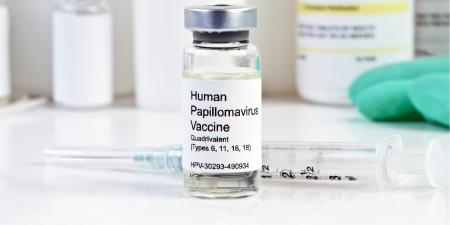Case
Dr. Feyn, a Denver pediatrician, mentions to his colleague Dr. Manning that parents’ refusal of vaccines for their children has become more popular among parents in his patient panel in the last 5 years. “Most of these parents have similar reasons for choosing not to vaccinate their children. They cite alternative vaccination schedules, celebrity campaigns against vaccine side effects, even online forum discussions with other parents.”
Dr. Manning responds, “The CDC has recommended schedules for vaccination, but I know you would like to respect the discretion of patients and parents of patients as much as possible. So what are you going to do?”
“In the past I have documented the vaccine refusal and moved on, but I’m considering changing my approach,” Dr. Feyn responds. “As the number of unvaccinated children in my practice increases, I wonder if I am creating a risky environment for vaccine-preventable infections in my community. We recently witnessed an outbreak of pertussis nearby in Boulder because the percentage of immunized kids at a certain school was below threshold necessary for herd immunity.
“I’m thinking of insisting that my patients receive vaccinations according to the standard schedule, unless, of course, there is a specific health-related reason why an individual child should not be vaccinated. I am also considering not treating children in my practice unless they are vaccinated. What do you think of that?”
Commentary
Parental refusal of vaccination for children has led to an emergence of vaccine-preventable illness nationally. In the case of vaccination against measles, national trends of vaccine refusal have increased the number of measles cases. According the Centers for Disease Control and Prevention’s (CDC) Morbidity and Mortality Weekly Report (MMWR),between January 1st and May 20th, 2011, 24 states reported 118 cases of measles [1]. This is the highest number of measles cases reported since 1996. Of these cases, 89 percent were unvaccinated persons.
Outbreak investigations over the past 4 years reveal increased numbers of cases related to intentional refusal of vaccination by parents. In an outbreak of measles in San Diego County in 2008, an association was found between cases and intentional avoidance of vaccination [2]. In this instance, one imported case of measles resulted in 839 exposed persons. Both the index case and 75 percent of all related cases were in children whose parents had intentionally avoided vaccinating their children. Similarly, many of the 21 children affected by the largest measles outbreak in 2011 were unvaccinated because of parental concerns about the safety of the measles, mumps, and rubella (MMR) vaccine [3, 4].
Although the problem of inadequate vaccination is not an entirely new problem, the role of the physician in protecting vulnerable populations cannot be overemphasized. To understand whether it is ethical not to treat children whose parents refuse to vaccinate them, it may be beneficial to define the population of interest and strategies found to be effective in communicating with their parents.
Vulnerable Populations
Particularly vulnerable populations of children are those that cannot be immunized or develop an immune response. These children rely primarily on herd immunity, the vaccination of a critical mass of the population against life-threatening diseases. These populations include children under 12 months of age (too young for vaccination) and children who have chronic medical conditions that prevent them from being able to receive vaccinations. In 2011, 15 percent of cases of measles were in children too young for vaccination. Within the 165 deaths associated with measles cases between 1987 and 1992, 14-16 percent were in children who had pre-existing conditions that prevented them from being vaccinated [4]. Vulnerable groups of children are at particular risk when exposed to the children of parents who willingly choose not to vaccinate their children, not only because of their increased susceptibility but because that increased susceptibility can also lead to worse sequelae in those infected [5].
Other vulnerable populations include children who are not vaccinated for reasons other than medical indications. An analysis of the risk of measles within the population of children exempt from vaccination for nonmedical reasons showed that between 1985 and 1992 these children were 35 times as likely to contract measles as those without exception [6]. Requirements for vaccination of children in school have also waned. As more nonmedical exemptions from vaccination are accepted by schools, cases of vaccine-preventable illness rise [7-9]. Traditionally, it has been the role of public health authorities to protect the most vulnerable groups within a population. If vaccination refusal is leading to more cases of vaccine-preventable illness affecting vulnerable groups of children, it is imperative that we equip physicians and parents with tools to assist in protecting children at risk.
A History of Vaccination Requirements
Vaccination status improved nationwide after 1962 when the Vaccination Assistance Act was passed, providing ongoing financial support to state or local health departments. Initial goals set in 1977 by the Childhood Immunization Initiative were to achieve 90 percent immunization levels. These goals were superseded in 1980 when 50 states passed laws requiring immunizations for students entering schools. With improved vaccination rates nationally, vaccine-preventable deaths decreased. Vaccine adverse events were recorded as early as 1972 and developed formally into the Vaccine Adverse Events Reporting System in 1986—a passive surveillance system receiving reports nationally from clinicians and the families of vaccine recipients [10].
Trends in Vaccine Refusal
Early surveys of vaccination refusal by the National Immunization Program demonstrated several reasons for vaccination refusal, the most prevalent of which were fear of vaccine safety and the perception that vaccines did not provide sufficient benefits to outweigh the risks [11-14]. Controversy over vaccine safety began to grow in 1980, after some allegations were made that the diphtheria/tetanus/pertussis (DTP) vaccine was a cause of infant deaths and other permanent injury. Following early doubts in vaccine safety, vaccine refusal focused on unsubstantiated claims that vaccines were associated with the onset of autism, attention deficit disorder, and other cognitive deficits affecting children.
Vaccine refusal is thus not a new problem. Cases of vaccine-preventable disease resulting from inadequate vaccination were identified in the 1980s and ’90s. At that time, vaccine-preventable illness predominantly affected unvaccinated preschool- and school-aged children [15, 16]. Between 1987 and 1992, it was estimated that there were 165 measles-associated deaths [4], accounting for an attack rate of 2.54-2.83 deaths per 1,000 reported cases in the United States. Deaths related to measles, a vaccine-preventable disease, were most commonly caused by measles-associated pneumonia or encephalitis. These deaths occurred out of a total of over 55,000 cases of measles in the United States during the same period [4].
The vaccination refusal that physicians see varies by community and specialty, but some surveys have found trends. One survey found that parents of unvaccinated children were more likely than parents of undervaccinated children (those who receive at least one vaccine) to be white, married, college-educated, and high-income earners and to have five or more children [17]. Another study found that the parents of unvaccinated children were more likely than the parents of vaccinated children to have the perceptions that their children were not as susceptible as other children to disease, that the diseases vaccines protected against did not have severe health consequences, and that vaccines were not efficacious in disease prevention [18]. For all parents refusing vaccination, the most common worry regarded vaccine safety.
The Physician’s Role
When there is poor vaccine acceptance, the role of the physician becomes crucial. The importance of physicians’ role in vaccine acceptance and vaccine-related education cannot be overemphasized. This was demonstrated in the case of a measles outbreak in San Diego. During this outbreak, inadequate vaccination against measles was associated with physicians’ assumptions that vaccination was contraindicated in sick children, clinicians’ choosing not to give multiple vaccinations in one visit, and private doctors’ referring children who lacked insurance to other clinicians [19].
Several studies have found that parents’ preferred source of vaccination information is health care professionals [20, 21]. A survey of 21,420 households conducted by the National Center for Immunization and Respiratory Diseases in 2009 concluded that the most important source of help in decisions about vaccinating young children was the child’s doctor or nurse. In the survey, 86.5 percent of respondents reported that they usually followed the clinician’s advice, and 84 percent reported that they trusted it. A second study from the University of Michigan reiterated the importance of physician advice to parental decision making about vaccination. Of the 2,521 online survey responses, 76 percent of parents reported trusting a physician in regards to vaccine-safety information, and only 2 percent reported not trusting a physician at all [22].
In the context of these data, some strategies may be better than others in approaching parents who refuse vaccination. In light of evidence regarding physicians as trusted sources of information about vaccine safety, it would seem a bit premature to turn away patients whose parents refuse vaccination. Instead, it may be more beneficial to engage the parents of our patients. In this way, we can fulfill our role as patient educators, patient advocates, and public health practitioners. Important to an understanding of our role is a clear acknowledgement of the risk vaccine refusal presents to intentionally unvaccinated children and children who cannot be vaccinated due to age or medical condition. Considering the hundreds of unnecessary deaths and illnesses among children caused by vaccine-preventable illness every year in our country, it is our duty to do what we can to ward off preventable illness. In the case of vaccine refusal, this may take the form of a simple conversation with parents.
References
-
Centers for Disease Control and Prevention (CDC). Measles--United States, January--May 20, 2011. MMWR Morb Mortal Wkly Rep. 2011;60(20);666-668.
- Sugerman DE, Barskey AE, Delea MG, et al. Measles outbreak in a highly vaccinated population, San Diego, 2008: role of the intentionally undervaccinated. Pediatrics. 2010;125(4):747-755.
-
Centers for Disease Control and Prevention (CDC). Measles outbreak--Hennepin County, Minnesota, February--March 2011. MMWR Morb Mortal Wkly Rep. 2011;60(13):421.
- Gindler J, Tinker S, Markowitz L, et al. Acute measles mortality in the United States, 1987-2002. J Infect Dis. 2004;189(Suppl 1):S69-S77.
-
Poehling KA, Talbot TR, Griffin MR, et al. Invasive pneumococcal disease among infants before and after introduction of pneumococcal conjugate vaccine. JAMA. 2006;295:1668-1674.
-
Salmon DA, Haber M, Gangarosa EJ, Phillips L, Smith NJ, Chen RT. Health consequences of religious and philosophical exemptions from immunization laws: individual and societal risk of measles. JAMA. 1999;282:47-53.
- Omer SB, Salmon DA, Orenstein WA, deHart MP, Halsey N. Vaccine refusal, mandatory immunization, and the risks of vaccine-preventable diseases. N Engl J Med. 2009;360(19):1981-1988.
- Omer SB, Pan WK, Halsey NA, et al. Nonmedical exemptions to school immunization requirements: secular trends and association of state policies with pertussis incidence. JAMA. 2006;296(14):1757-1763.
- Omer SB, Enger KS, Moulton LH, et al. Geographic clustering of nonmedical exemptions to school immunization requirements and associations with geographic clustering of pertussis. Am J Epidemiol. 2008;168(12):1389-1396.
-
Centers for Disease Control and Prevention (CDC). Vaccine-preventable diseases, immunizations, and MMWR--1961-2011. MMWR Morb Mortal Wkly Rep. 2011;60(04);49-57.
- Smith PJ, Humiston SG, Marcuse EK, et al. Parental delay or refusal of vaccine doses, childhood vaccination coverage at 24 months of age and the Health Belief Model. Public Health Rep. 2011;126(Suppl 2):135-146.
-
Smith PJ, Kennedy, AM, Wooten, K. et al. Association between health care providers’ influence on parents who have concerns about vaccine safety and vaccination coverage. Pediatrics. 2006;118;e1287.
-
Salmon DA, Moulton LH, Omer SB, Dehart MP, Stokley S, Halsey NA. Factors associated with refusal of childhood vaccines among parents of school-aged children: a case-control study. Arch Pediatric Adolesc Med. 2005;159:470-476.
-
National Vaccine Advisory Committee. The measles epidemic: the problems, barriers and recommendations. JAMA. 1991;266:1547-1552.
-
Markowitz LE, Preblud SR, Orenstein WA, et al. Patterns of transmission in measles outbreaks in the United States, 1985–1986. N Engl J Med. 1989;320:75-81.
-
Gindler JS, Atkinson WL, Markowitz LE, Hutchins SS. Epidemiology of measles in the United States in 1989 and 1990. Pediatr Infect Dis J. 1992;11:841–846.
-
Smith PJ, Chu SY, Barker LE. Children who have received no vaccines: who are they and where do they live? Pediatrics. 2004;114(1):187-195.
- Salmon DA, Pan WK, Omer SB, et al. Vaccine knowledge and practices of primary care providers of exempt vs. vaccinated children. Hum Vaccin. 2008;4(4):286-291.
-
Centers for Disease Control and Prevention (CDC). Provider resources for vaccine conversations with parents. http://www.cdc.gov/vaccines/spec-grps/hcp/conversations.htm. Accessed December 18, 2011.
-
Kennedy A, Basket M, Sheedy K. Vaccine attitudes, concerns and information sources reported by parents of young children: results from 2009 HealthStyles Survey. Pediatrics. 2011;127 Suppl 1;S92.
- Gellin BG, Mailbach EW, Marcuse EK. Do parents understand immunizations? A national telephone survey. Pediatrics. 2000;106(5):1097-1102.
-
Freed, GL. Clark SJ, Butchart AT, Singer DC, Davis MM. Sources and perceived credibility of vaccine-safety information for parents. Pediatrics. 2011;127 Suppl 1:S107.



